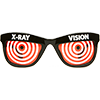Isn't there some gotcha with quantum entanglement that these articles never talk about that makes FTL communication with them impossible?
Yeah, i'm willing to show my ignorance.
Entanglement describes a set of possibilities, a physical property. When a measurement is taken you collapse the possibilities and the system is no longer entangled.
It's the ELI5 apple thing. You have 100 apples, you have 2 bags. You distribute the apples in the two bags and give it to 2 guys who move some arbitrary distance from each other. As soon as the first guy opens his bag he knows exactly how many apples are in the second bag. But it has nothing to do with an exchange of information. It has everything to do with an understanding of the initial parameters of the apple/bag system. It could have been any amount of apples between 0 and 100.
It's weird that such a thing would occur on a microscopic level... but apparently it does occur.
But you really can't use it to exchange information. Information isn't being exchanged, it's a consequence of the initial state. That initial state is the information.
It seems like you might be able to devise a scheme around that initial information to create the illusion of information exchange. Like you take a bunch of them and simulate binary. But the states are arbitrary. Right? We don't get to put 60 apples in one bag and then pretend like we don't know what we did. For entaglement to be entanglement it has to be a field of possibility.
Maybe you could purposefully link two systems like that, but that's not what entanglement is. Every system which we do purposefully link like that is bounded by C, because information is being exchanged. In a way that's what electricity is. So we could try to do that with entangled systems... but it would be gibberish. There would be nothing meaningful that you're able to extract from that knowledge beyond a knowledge of the initial state. And it doesn't matter how many times you abstract it, you are still bounded by the arbitrary nature of the initial state.
It would be GREAT for I Ching readings, though! Truly impeneterable cryptography. But that's not information being exchanged, again, only observations about the initial state. That's just an immutable physical truth. In fact it's observation that makes it immutable.
And what's truly bizzare about it is that, apparently, you can choose an arbitrary origin and make symmetric measurements to find that space itself seems to be entangled. And that holds true for multiple origins, but not for overlaid origins. Once you pick a zero, that's your zero. Until you pick another zero. That's what's REALLY strange. That's fabric of reality type shit right there.





